light tackle
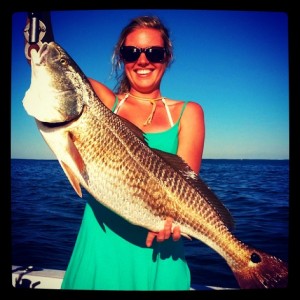 Bad news and more bad news. If you’re following the politics around striped bass management, you know it’s all bad news for the fish lately. Where are the rockfish in the Chesapeake Bay? It doesn’t take an expert to realize that almost every fishing boat from Solomons Island to Rock Hall is working one primary school of stripers. To quote conservation blogger John McMurray, “it’s not where the fish are, it’s where they aren’t,” and apparently they aren’t anywhere except near the mouth of Eastern Bay.
Bad news and more bad news. If you’re following the politics around striped bass management, you know it’s all bad news for the fish lately. Where are the rockfish in the Chesapeake Bay? It doesn’t take an expert to realize that almost every fishing boat from Solomons Island to Rock Hall is working one primary school of stripers. To quote conservation blogger John McMurray, “it’s not where the fish are, it’s where they aren’t,” and apparently they aren’t anywhere except near the mouth of Eastern Bay.
Despite the demise of our state fish, things are looking up for another native Chesapeake species, the red drum. You probably haven’t heard much about catching redfish in Maryland over the past decade, but that’s all changing. Last summer there were reports of redfish as far north as the Gunpowder River in the Upper Bay. I started targeting them around Kent Island last August, and I’m already catching them again this year.
Thanks to good management practices – especially by states to our south – and an overall warming trend along the Atlantic Coast, red drum are expanding their range. That’s good news for Chesapeake light tackle fishermen because redfish will readily attack a jig or a topwater plug. Even if you’ve never targeted redfish before, chances are you already know how to catch them. Almost all the artificial lure techniques we’re currently using for stripers will work for redfish. As stripers continue to decline, redfish are moving into their habitat and populating the underwater humps and ledges where stripers used to feed. Read More!
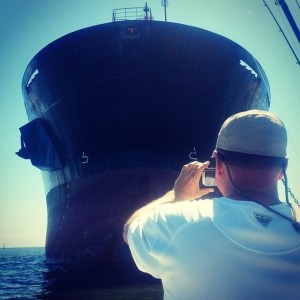 1. It was still a beautiful day on the water.
1. It was still a beautiful day on the water.
2. That’s why they call it fishing, not catching.
3. I don’t go to catch fish, I go to relax.
4. It was a nice day for a boat ride.
5. I just needed to run the engine.
6. There was a good band playing at The Jetty, so we came in early.
7. It’s not how many fish you catch, it’s how good you look fishing.
8. I just wanted to work on my tan.
9. I enjoy bird watching as much as catching fish.
10. I didn’t get skunked, I ran out of time. Read More!
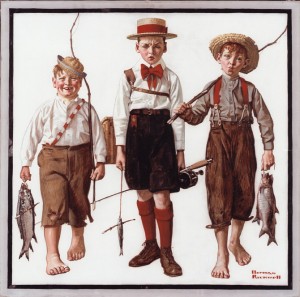 Been fishing lately? If you have, I bet you’ve noticed that there are a lot of suspended fish this time of year. There’s nothing more frustrating to Chesapeake Bay light tackle fishermen than to see nice marks on the fish finder, then not get bites. How do you catch those finicky suspended rockfish? Frankly, it’s tough, but there are some things you can do to increase your chances. To start, consider what’s going on below the surface.
Been fishing lately? If you have, I bet you’ve noticed that there are a lot of suspended fish this time of year. There’s nothing more frustrating to Chesapeake Bay light tackle fishermen than to see nice marks on the fish finder, then not get bites. How do you catch those finicky suspended rockfish? Frankly, it’s tough, but there are some things you can do to increase your chances. To start, consider what’s going on below the surface.
1. Scope Out The Situation – Stripers adjust their feeding habits depending on conditions. Since the Chesapeake Bay is an estuary, conditions can change frequently. Sometimes changes are short-term like those brought on by tides and currents. Sometimes, they last longer like with seasonal water-temperature adjustments. There are even cases where conditions can change for years at a time.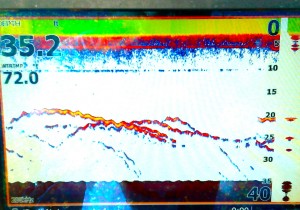
In the near-decade that I’ve been fishing the Chesapeake, I’ve noticed a change, particularly in the warmer months, to more fish feeding in temperate mid-level zones in open water. This can happen when the water conditions on the surface are not as comfortable as they are farther down. In the spring when we get a lot of rain, storm water runs off polluted roads, parking lots, fertilized lawns, and farmer’s fields resulting in a surface layer of unsalted, polluted water. Stripers will come up to feed in this layer when conditions are good and when they’re very hungry, but they’ll drop back down into the comfort zone when they aren’t extremely active. They usually won’t swim down deeper than forty feet or so because the water down deep may not hold enough oxygen, or the temperature or salinity can be uncomfortable for them. Read More!
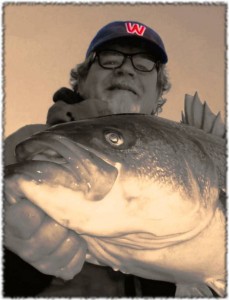 “I only write when I’m inspired,” wrote William Faulkner. I’d find that statement comforting if he hadn’t followed it with, “and I’m inspired every morning at 9:00 AM.” Lately, my every-morning-at-9:00 AM-ritual hasn’t included much writing. Oh, I’ve had plenty to write about, it’s just that I’ve overcommitted myself (again) so that every spare waking minute seems filled with obligation. When I have some spare time, I usually go fishing. Since I bet you’d much rather hear about the fishing than the excuses, I’ll dive right in.
“I only write when I’m inspired,” wrote William Faulkner. I’d find that statement comforting if he hadn’t followed it with, “and I’m inspired every morning at 9:00 AM.” Lately, my every-morning-at-9:00 AM-ritual hasn’t included much writing. Oh, I’ve had plenty to write about, it’s just that I’ve overcommitted myself (again) so that every spare waking minute seems filled with obligation. When I have some spare time, I usually go fishing. Since I bet you’d much rather hear about the fishing than the excuses, I’ll dive right in.
If the paragraph above sounds familiar, it’s because it’s a re-run from an article I posted here on ChesapeakeLightTackle.com in April two years ago. I guess what goes around always comes back, and once again I’m struggling to keep too many plates spinning in the air. I sometimes have to scale down, tune out, and just fish. If I haven’t returned an email or phone call recently, I apologize. The good news is that things are starting to settle down and I’ve found a few minutes for a fishing report and a word or two of advice.
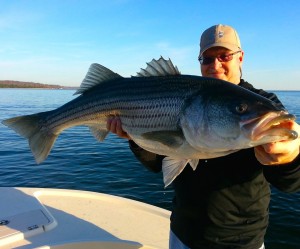 I bet you’re aware that the rockfish catch and kill season opens this Saturday in Maryland. While I enjoy seeing people get excited about fishing, I always dread the start of the kill season. Opening Day doesn’t mean much to fishermen who are in it for the simple joy of fishing. Most of us have been catching and releasing fish all winter. We fish because we love the sport, not because it puts meat on the table. I like to eat fish too, but you won’t see me keeping any big stripers this trophy season. Read More!
I bet you’re aware that the rockfish catch and kill season opens this Saturday in Maryland. While I enjoy seeing people get excited about fishing, I always dread the start of the kill season. Opening Day doesn’t mean much to fishermen who are in it for the simple joy of fishing. Most of us have been catching and releasing fish all winter. We fish because we love the sport, not because it puts meat on the table. I like to eat fish too, but you won’t see me keeping any big stripers this trophy season. Read More!
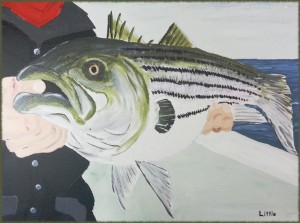 Are you ever surprised when someone you know to be a good angler turns out to be an artist? How many fishermen have you met that are also painters, writers, builders, etc? After hanging around fish and fishermen for more than fifty years, it has become clear to me that fishing attracts creative thinkers. Fishing, by its very nature requires artistry, innovation, and experimentation. It frequently compels us to turn loose of what we know, and reach out for things we hope for.
Are you ever surprised when someone you know to be a good angler turns out to be an artist? How many fishermen have you met that are also painters, writers, builders, etc? After hanging around fish and fishermen for more than fifty years, it has become clear to me that fishing attracts creative thinkers. Fishing, by its very nature requires artistry, innovation, and experimentation. It frequently compels us to turn loose of what we know, and reach out for things we hope for.
Everyone should believe in something; I believe I’ll go fishing. – Henry David Thoreau
By now, you’ve probably heard me say that it’s the bad days that make us better fishermen. Catching is easy when fish are biting, and almost any lure you throw in the water will work. Conversely, it’s the tough days that require us to get creative and use the less logical side of our brains. My fishing partner Jamie Clough tells a story about an ancient old fly fisherman who has frequented the meat counter where he works for more than a decade. On each visit, he mentions a spot he used to fish where he caught big speckled trout. His secret fishing hole was right under everyone’s nose and smack in the middle of one of the highest-traffic areas in the Chesapeake Bay. Jamie says he’d smile and nod at the stories, but never gave them a second thought until one day last summer. After an unsuccessful and frustrating morning, he decided to check out the old guy’s unlikely trout spot. Can you guess what happened next? It’s a safe bet that Jamie will never pass by that spot again, and I’m thinking that gentlemen gets an extra-thick ribeye once in a while. Read More!
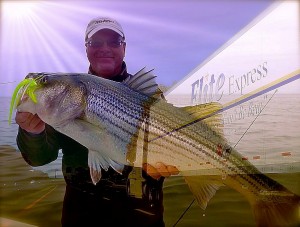 Tell someone where to catch a Chesapeake Bay striped bass and you may help them for a day, but teach them how to identify specific seasonal patterns, and you’ve put them on the express route to becoming an elite fisherman. The fall migratory run is on. This is the time of year when the learning curve drops significantly and stripers feed voraciously. They aren’t too picky about the kind of baits they’ll take and they aren’t as choosy about lure presentation. It’s a great time to learn how to cast lures for big fish. It’s also the time when I step up on my “think patterns, not places” soapbox. Ask any accomplished angler their secret to repeated success and they’ll tell you it’s the ability to identify specific feeding patterns. I believe that you can drop a good fisherman into any body of water in the world and he’ll catch fish as long as you give him enough time to recognize prevailing patterns. Pattern recognition is especially important on the Chesapeake where conditions change quickly. Fortunately, fish are creatures of habit and we can identify predictable characteristics in their behavior.
Tell someone where to catch a Chesapeake Bay striped bass and you may help them for a day, but teach them how to identify specific seasonal patterns, and you’ve put them on the express route to becoming an elite fisherman. The fall migratory run is on. This is the time of year when the learning curve drops significantly and stripers feed voraciously. They aren’t too picky about the kind of baits they’ll take and they aren’t as choosy about lure presentation. It’s a great time to learn how to cast lures for big fish. It’s also the time when I step up on my “think patterns, not places” soapbox. Ask any accomplished angler their secret to repeated success and they’ll tell you it’s the ability to identify specific feeding patterns. I believe that you can drop a good fisherman into any body of water in the world and he’ll catch fish as long as you give him enough time to recognize prevailing patterns. Pattern recognition is especially important on the Chesapeake where conditions change quickly. Fortunately, fish are creatures of habit and we can identify predictable characteristics in their behavior.
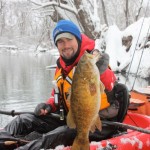
I fished this past Saturday with a new fishing buddy, Jeff Little. You may have heard of Jeff because he’s well-known in the kayak fishing world for his instructional DVDs and videos about smallmouth fishing. Fortunately for Chesapeake Bay fishermen, he’s been bit by the striper bug. I’ve teamed up with him to produce some videos that illustrate my most successful techniques. Stay tuned because we’ll soon be posting one we shot Saturday about striper fishing in the fall on the Chesapeake Bay. We’ll launch a short preview first. If you like it, you can watch the action-packed 30-minute version for just $2.49. Read More!



